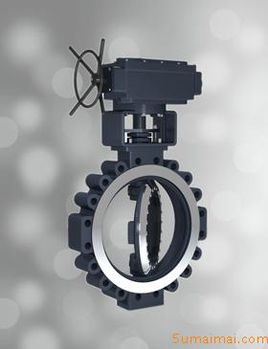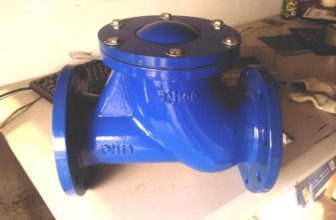
[ad_1]
With the continuous development of low-temperature devices, the requirements for low-temperature valves are also gradually increasing. The structure of metal-sealed butterfly valves is improved, and the butterfly valves with triple-eccentric pure metal and high sealing performance can meet their needs regardless of whether the medium is high temperature or low temperature.

1. Design requirements for valve body and stem bushing
1) The structural shape of the cryogenic valve shell.Whether the material selection is correct or not has a great influence on the normal and reliable operation of the valve.importantmeaning.Compared with the globe valve and gate valve, the structural characteristics of the butterfly valve not only avoid the irregular shape, the uneven wall thickness of the shell, the cold shrinkage at low temperature, and the stress caused by temperature difference.out of shapeand due to the small size of the butterfly valve, the shape of the valve body is aboutbasicYes, it is weighed, so the heat capacity is small; the cooling capacity consumption is also small; the shape is regular and it is convenient for the cold preservation measures of the valve. Such as the newly developed DD363H butterfly valve, in order to ensure the reliable use of the valve at low temperature, it is designed and manufactured completely according to the particularity of low temperature valves, such as: 1Cr18Ni9Ti austenitic stainless steel with cubic lattice is selected as the shell material.
2) Selection of valve stem bushing: According to user feedback, during operation of some low-temperature valves, the rotating parts of the valve are viscous, and the phenomenon of seizure occurs from time to time. The main reasons are: the selection of matching materials is unreasonable, and the cooling gap is too small , and processing accuracy and other reasons. When developing cryogenic valves, a series of measures have been taken to prevent the above phenomena. For example: we have selected SF-1 type composite bearings with small friction coefficient and self-lubricating performance for the upper and lower bushings of the valve stem, which can be applied to some special needs of low-temperature valves.
2. Requirements for the sealing performance of cryogenic disc valves
There are two main reasons for the leakage of cryogenic valves, one is internal leakage; the other is external leakage.
1) The main reason for the internal leakage of the valve is the deformation of the sealing pair at low temperature. When the temperature of the medium drops to the point where the material undergoes a phase change, the volume changes, causing the original high-precision grinding sealing surface to warp and deform, resulting in poor low-temperature sealing. We have conducted low-temperature tests on DN250 valves. The medium is liquid nitrogen (-196°C). The butterfly plate material is 1Cr18Ni9Ti (without low-temperature treatment). It is found that the warping deformation of the sealing surface is about 0.12mm, which is the main cause of internal leakage.
The newly developed butterfly valve is changed from flat seal to cone seal. The valve seat is an oblique conical elliptical sealing surface, which forms a sealing pair with a perfect circular elastic sealing ring embedded in the butterfly plate. The sealing ring can float radially in the disc groove. When the valve is closed, the elastic sealing ring first contacts the short axis of the elliptical sealing surface, and gradually pushes the sealing ring inward with the rotation of the valve stem, forcing the elastic ring to contact the long axis of the inclined conical surface, eventually resulting in an elastic seal The ring is in full contact with the oval sealing surface. Its sealing is achieved by deformation of the elastic ring. Therefore, when the valve body or butterfly plate deforms at low temperature, it will be absorbed and compensated by the elastic sealing ring, and no leakage or jamming will occur. This elastic deformation disappears immediately when the valve is opened, and there is basically no relative friction during the opening and closing process, so the service life is long.
2) Leakage of the valve: First, when the valve and the pipeline are connected by flanges, the leakage is caused by the asynchronous shrinkage of the connecting gasket, connecting bolts, and connecting parts between materials at low temperatures. Therefore, we changed the connection between the valve body and the pipeline from flange connection to welding structure to avoid low temperature leakage. The second is the leakage at the valve stem and packing. Generally, F4 is used as the stuffing of most valves, because it has good self-lubricating performance, small friction coefficient (f=0.05-0.1 for steel) and unique chemical stability, so it is widely used. However, F4 also has disadvantages. First, the tendency of cold flow is large; second, the coefficient of linear expansion is large, which causes leakage at low temperature due to cold shrinkage, resulting in a large amount of ice on the valve stem, which even makes the valve fail to open. The low-temperature butterfly valve developed for this purpose adopts a self-shrinking sealing structure, which utilizes the characteristics of the large expansion coefficient of F4, and achieves the purpose of sealing at room temperature and low temperature through the reserved gap.
After the butterfly valve is applied to cryogenic equipment, there will be more scenarios and working conditions to be seen, so it will be of great help to understand the actual application of the metal-sealed butterfly valve in the above-mentioned cryogenic equipment.
[ad_2]




